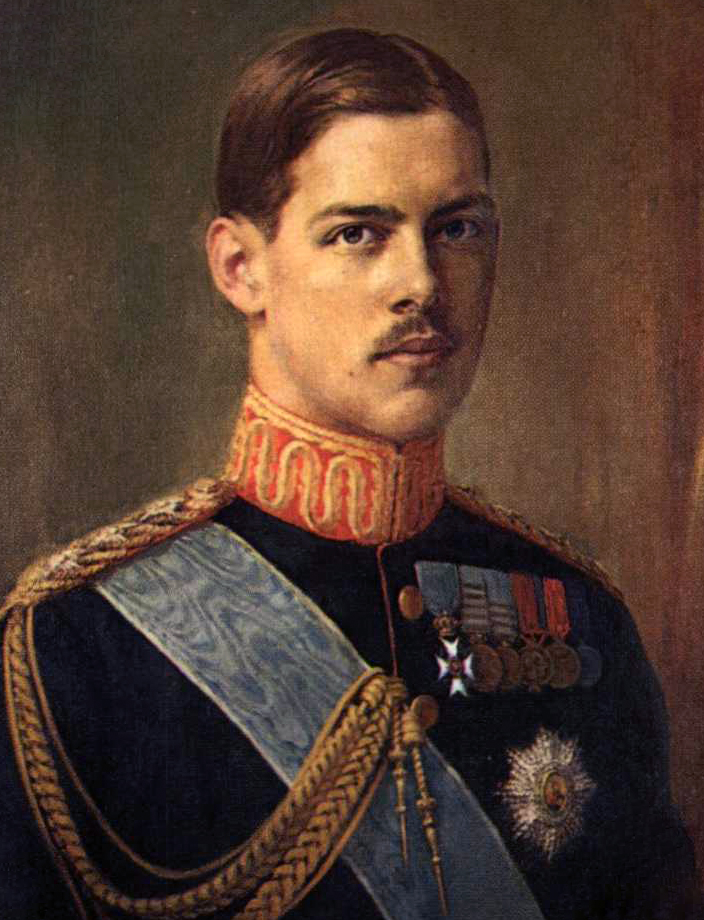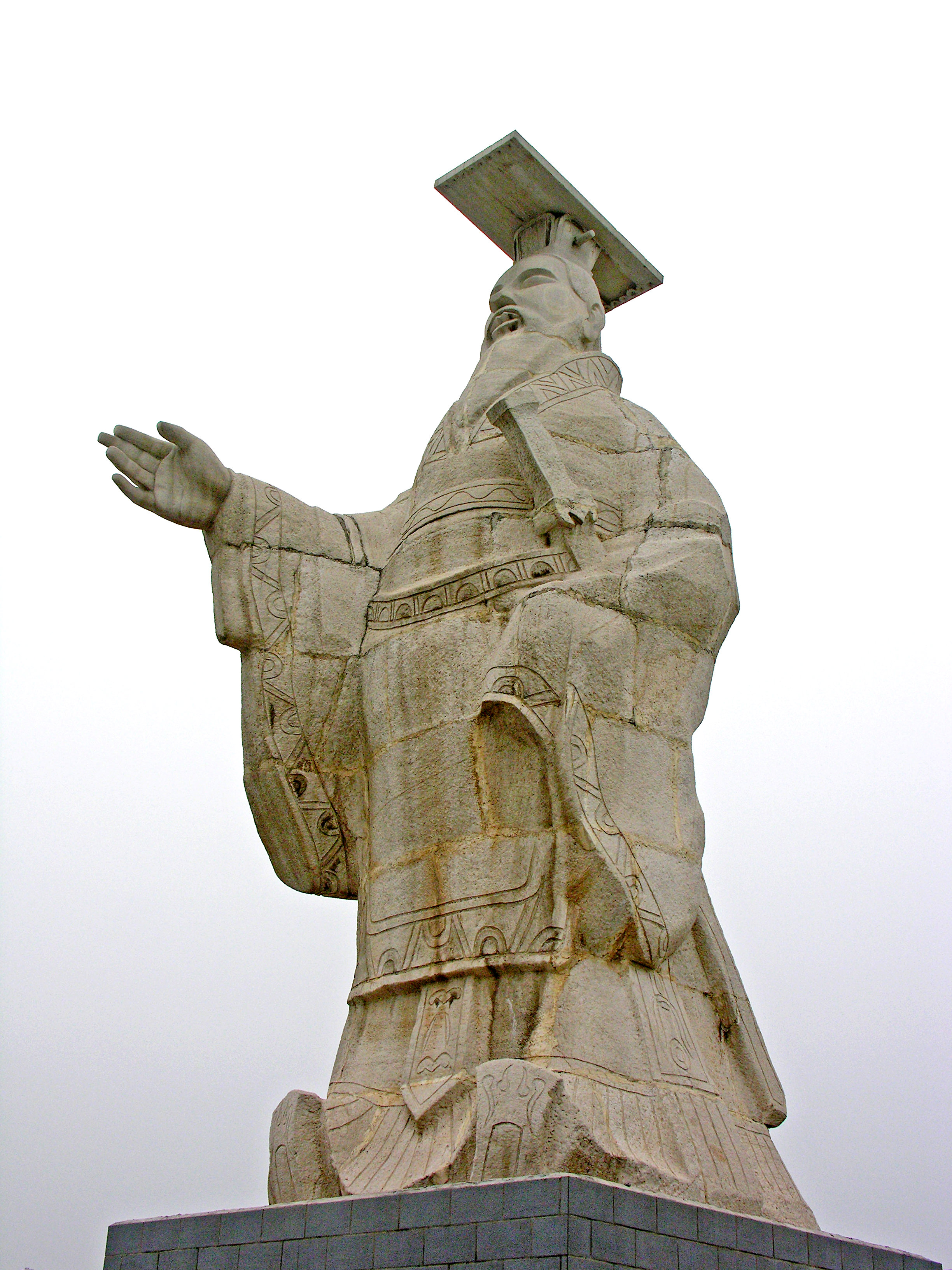
Throughout history, the very word ‘royalty’ conjures images of opulence, power, and perhaps most enduringly, dignity. For centuries, those born into the purple enjoyed the ultimate lottery win, treated as demigods, surrounded by the finest of everything – from grand palaces and gourmet feasts to elite healthcare and education. Even those who ascended to the throne later in life fought fiercely to retain their grip on such immense privilege, determined to pass it on to their heirs. It’s a world that seems utterly removed from the everyday struggles of commoners, a gilded cage of unending comfort and respect.
Yet, for all their extraordinary advantages, there’s one great equalizer that eventually catches up to everyone, regardless of crown or commoner status: death. It’s the ultimate leveler, ensuring that even the most exalted monarchs eventually face their final moments. And while many royals certainly enjoyed a long, dignified reign, history is peppered with fascinating, bizarre, and outright undignified ends that would make even the most seasoned historian scratch their head.
Prepare to have your mind boggled, because we’re about to embark on a curious journey through the annals of history to uncover some of the most embarrassing, least dignified, and truly unbelievable royal deaths of all time. These are the stories that prove that even with a crown on your head, fate can have a remarkably quirky sense of humor. From unfortunate animal encounters to questionable medical advice and self-inflicted blunders, these tales will stick with you long after you’ve turned the page.

1. **King Alexander of Greece Was Killed by a Monkey**
Forget the legendary conqueror of the ancient world; we’re talking about a more recent Alexander, King of Greece, who reigned from 1917 until a most peculiar demise just three years later. This Alexander (1893 – 1920) is perhaps more infamous for the remarkably undignified manner of his death than for any grand accomplishments during his short time on the throne. It’s a story that sounds like something ripped from a farcical comedy, yet it had serious geopolitical ramifications.
His fateful end began on September 30th, 1920, during a seemingly innocuous stroll through the Royal Gardens with his dog. Suddenly, a Barbary macaque monkey appeared, attacking the king’s canine companion. Alexander, true to the protective nature of a pet owner, rushed in to separate the brawling animals. What he didn’t realize, however, was that this particular monkey had backup. As the king struggled to restore peace, another monkey joined the fray, perceiving Alexander and his dog as ganging up on its friend, and bit the king several times on the leg and upper body.
Though his entourage quickly intervened and chased the simians away, the damage was done. The monkey bites became severely inflamed, leading to a serious infection. Amputation of the leg was considered a drastic measure, but remarkably, none of the doctors were willing to take responsibility for such a monumental decision. The delay proved fatal. By the time the option was reconsidered, the infection had spread irrevocably throughout the king’s body. King Alexander tragically died of sepsis three weeks after the monkey encounter, at the tender age of 27. His death would have far-reaching consequences for Greece, including the restoration of his deposed father and a major shift in military policy, ultimately contributing to a humiliating defeat in the Greek invasion of Turkey. All because a king and his dog picked the wrong monkey to mess with.

2. **King Edmund Ironside: Coup in the Loo**
When we think of royal assassinations, grand conspiracies, and dramatic battlefields often come to mind. But for King Edmund II, famously known as ‘Ironside,’ his end was reportedly far less glamorous, taking place in perhaps the most undignified of settings. Edmund, known for his fierce resistance against the Danish king Canute in 1016, reigned for just over seven months before his surprisingly bizarre and widely debated demise.
While some historical sources conservatively attribute his death to natural causes or injuries sustained in battle, a much more captivating and popular tale, shared by 12th-century chronicler Henry of Huntingdon, paints a vividly undignified picture. According to this account, King Edmund was in the midst of ‘doing his business’ on the toilet when an assassin burst in and brutally stabbed him to death. Another variation of this story suggests a crossbow was the weapon of choice, cleverly rigged as a booby trap to fire upon the unsuspecting monarch as he sat down.
Adding to the intrigue, Eadric Streona, a former official who had betrayed Edmund to side with Canute, was often named as the culprit behind this ignominious act. Though Streona himself met a sticky end shortly after at Canute’s hand, the image of a king meeting his end in such a private and vulnerable moment has certainly stuck. It’s a testament to how even the most powerful figures could be brought down in the most unexpected and certainly least regal of circumstances, transforming a private necessity into a historical horror story.

3. **Emperor Valerian: A Brutal Captivity and Gruesome End**
Publius Lucinius Valerianus, or simply Emperor Valerian, experienced a reign as unstable as the Roman Empire he briefly commanded from A.D. 253 to A.D. 260. He ascended the throne with hopes of restoring order, but his legacy became tragically defined by his epic failures and, ultimately, one of the most brutal and bizarre royal deaths in history. His story serves as a stark reminder that even emperors were not immune to the horrors of capture and humiliation.
In A.D. 260, Valerian made the fatal mistake of arranging a meeting with Persian emperor Shapur I, only to find himself led into a cunning trap and forced into a life of abject captivity in Persia. There, he was subjected to a litany of indignities that would shatter any semblance of imperial dignity. He was dragged around in chains, a stark symbol of his defeat, and, most famously, was literally used as a footstool by Shapur, forced to bend low so his captor could step onto his back when mounting his horse. But these daily degradations were merely a prelude to his horrifying end.
Historians offer two equally brutal and bizarre versions of Valerian’s final moments, both of which leave little to the imagination. One account, vividly related by Roman author Lactantius, claims Valerian was flayed alive, his skin then stripped, dyed with vermilion, and grotesquely displayed in a temple as a warning to Rome. The other chilling version suggests he was forced to drink molten gold, a torturous method that would have ruptured organs, cooked muscles, and choked him to death in unimaginable agony. While some artistic renditions of the period strangely depict him being treated relatively well, the prevailing narratives emphasize a truly undignified and horrifying fate, ensuring his name remains etched in history for his gruesome demise rather than his imperial ambitions.

4. **George Plantagenet, Duke of Clarence: Drowned in a Barrel of Wine**
The tumultuous War of the Roses in 15th-century England was a period fraught with intrigue, betrayal, and unexpected turns of fate for the royal family. Amidst this chaos was George Plantagenet, Duke of Clarence, younger brother to Edward IV, the first king from the House of York. Despite his royal lineage, George found himself constantly at odds with his brother, a dangerous game that would ultimately lead to his notoriously peculiar end.
Plantagenet’s history was marred by conspiracy; he was discovered plotting against the king on multiple occasions. Though he briefly reconciled with his brother, his penchant for defiance continued. In 1477, he illegally tried and executed a woman, accusing her of poisoning his wife, a power he was certainly not authorized to wield. This, coupled with renewed suspicions of treason, led to his arrest and conviction in 1478. He was sentenced to death, but the manner of his execution remains one of history’s most bizarre whispers.
The official record states his death was private, conducted within the confines of the Tower of London, likely to spare the monarchy further public strife. However, the pervasive rumor, which has captivated imaginations for centuries, is that he was drowned in a vat of sweet malmsey wine. Further details are purely speculative, but theories abound: perhaps he chose this unusual method himself, possibly as a macabre jest, a nod to drowning being a recognized form of execution, or even to mock his brother’s alleged drinking habits. Another fascinating possibility suggests it was chosen to avoid the spilling of royal blood, a symbolic act that the family might have wished to prevent. Regardless of the truth, the image of a duke meeting his end submerged in a barrel of wine is undeniably one of the most curious and undignified royal deaths ever recorded.

5. **Shi Huangdi: The Immortal Emperor Killed by Mercury**
Zhao Zheng, who famously adopted the title Shi Huangdi—meaning ‘first emperor’—is celebrated for unifying China and founding the Qin dynasty in 221 B.C. His monumental achievements include the standardization of weights and measures, a unified writing system, and the initial construction of the Great Wall. However, despite his formidable grasp on temporal power, Huangdi nurtured an even greater ambition: eternal life, an obsession that would ironically lead to his rather undignified and self-inflicted demise.
As emperor, Huangdi became increasingly captivated by magic and the pursuit of immortality. He brought magicians and alchemists to his court, commissioning them to concoct elixirs that would grant him everlasting life. This quest intensified following multiple assassination attempts, some perilously close to success. He took extreme precautions, maintaining secrecy about his whereabouts and commissioning his magnificent Terracotta Army tomb, but his focus remained fixed on finding the rumored ‘Island of the Immortals’ or magical herbs that promised eternal youth.
His desperate search for immortality led him to ingest various elixirs, many of which contained ingredients now known to be highly poisonous, most notably mercury. It is widely believed that Shi Huangdi, the very first emperor, met his end after consuming one of these supposed immortality potions while on a journey. The irony is stark: the man who unified an empire and sought to live forever was poisoned by his own misguided quest. Adding a bizarre footnote to his death, his retinue reportedly had to conceal the stench of his decaying body during the return journey to the palace by filling barrels with fish, a truly undignified cover-up for an emperor’s final ride.

6. **King Béla I of Hungary: The Collapsing Throne**
Eleventh-century Hungarian history might not be a familiar topic to many, and King Béla I’s short reign is often overlooked. Yet, his story is a fascinating tangle of succession disputes and political maneuvering, culminating in one of the most remarkably bizarre accidental royal deaths on record. Born into a princely line, his early life was marked by his father’s blinding and his own exile, only to be called back by nobility to assume the throne in 1060.
His reign, however, was immediately complicated by his nephew Salomon being suddenly named as heir, a blatant breach of tradition that plunged Hungary into a political mess. This instability even drew the Holy Roman Empire into Hungarian affairs, with military advances threatening Béla’s rule. Amidst this tense political climate, in 1063, King Béla I met his sudden and unexpected end. It wasn’t through sickness or in battle, but in a manner that sounds almost too improbable to be true: his throne simply collapsed beneath him while he was in the city of Dömös.
The injuries sustained from the falling throne were severe, leaving him barely conscious. Despite his grave condition, his loyal supporters desperately carried him to Kinizsa Creek, hoping he might still be able to engage in crucial diplomatic discussions. However, his injuries proved fatal, and he died at the creek. To this day, questions linger about the incident: was it a truly bizarre and tragic accident, or was the collapsing throne a cleverly orchestrated and subtly executed assassination? Regardless, for a king to meet his end not by blade or plague, but by the very seat of his power giving way, is an undignified and truly unforgettable historical curiosity.
Even with the most rigorous planning and the highest walls of privilege, fate can deal a hand that reshapes history in the most peculiar ways. Our journey through the annals of royal demises continues, revealing more astonishing tales that prove even those born to the purple are not immune to bizarre accidents, perplexing mysteries, and truly undignified ends. Prepare to scratch your head and marvel at how life and death played out for these historical figures.

7. **The Unexplained Death of Alexander the Great**
When we speak of world-changing conquerors, Alexander the Great stands tall, his legacy cemented by a vast empire spanning two million square miles. After inheriting the kingdom of Macedonia, he steadily expanded his dominion from Greece all the way to India. Yet, for all his monumental achievements and a life filled with glory, the circumstances of his death at the tender age of 32 remain shrouded in a perplexing mystery that has confounded historians for centuries.
In June 323 B.C., as he was preparing to further expand his already sprawling empire, Alexander was suddenly struck by a mysterious fever in Babylon, in what is present-day Iraq. Over the next twelve days, his condition progressively worsened. He suffered from excruciating back pain, described as feeling like being impaled by a spear, unquenchable thirst, and a creeping paralysis that eventually left him unable to even raise his head. By the time he died, the precise cause of his demise was unknown, leading to much speculation. Compounding the enigma, historical records claim Alexander’s body did not decompose for six full days after his official declaration of death, a phenomenon that led some of his contemporaries to believe he was not merely a man, but a god. Modern theories attempt to explain this, suggesting he might have contracted an autoimmune disorder, such as Guillain-Barré Syndrome, which could have induced such profound paralysis that his breathing became undetectable, leading to a premature declaration of death while he was still alive.

8. **Princess Grace of Monaco: A Tragic and Questionable End**
The transformation of American actress Grace Kelly into Princess Grace of Monaco, following her marriage to Prince Rainier III in 1956, epitomized a fairytale come true for many. Her life as a royal was marked by elegance and public adoration, yet her tragic death in September 1982 raised a multitude of unsettling questions that continue to linger decades later. It was a shocking incident that shook the principality and left many searching for answers beyond the official narrative.
Princess Grace was driving with her 17-year-old daughter when she lost control of the vehicle, which careened off the side of a cliff. During the accident, she suffered two massive strokes, resulting in a severe brain hemorrhage. She was declared brain dead at the hospital, and her family made the heartbreaking decision to remove her from life support the following day. Despite the apparent straightforwardness of the official account, numerous inconsistencies and rumors fueled public inquiry. Princess Grace had openly disliked driving, prompting questions as to why she was behind the wheel that fateful day. Speculation also arose that her daughter was actually driving – a rumor actively denied by the daughter – or that a heated argument between them contributed to the loss of control. Furthermore, investigations of the road, despite its sharp turn, found no skid marks, and witnesses reported seeing no brake lights on the car, suggesting the vehicle might have been accelerating towards the turn rather than braking. Her daughter recounted trying to put the car into park and pulling the handbrake without success. With engineers confirming no mechanical faults with the vehicle, the mystery of what truly transpired in those final moments persists.

9. **Sigurd Eysteinsson: The Unexpected Killer Tooth**
The sagas of Viking conquest are rich with tales of fierce warriors and epic battles, but few are as bizarre as the demise of Sigurd Eysteinsson. As the Norse earl of the island of Orkney, Sigurd was an instrumental figure in the Viking conquest of Scotland in the late 800s, known for his military prowess and strategic acumen. Yet, for all his battlefield successes, it was a most unlikely and grotesque adversary that ultimately brought about his memorable end, not on the field of combat, but on the journey home.
Sigurd found himself locked in conflict with Máel Brigte the Bucktoothed, a leader from the Scottish mainland. To settle their differences, the two agreed to a battle, each bringing an army of exactly forty men. However, Sigurd, displaying a cunning streak, had no intention of adhering to these rules. He reportedly had two men mount each horse instead of one, creating the deceptive illusion of a forty-man force while secretly bringing double the agreed number. Predictably, his superior force easily won the battle, and as a barbaric yet customary trophy, Brigte’s head was unceremoniously chopped off and promptly tied to Sigurd’s saddle. It was the peculiar nickname, “the Bucktoothed,” that proved to be a macabre prophecy. As the Vikings rode triumphantly homeward, one of Brigte’s protruding teeth, still attached to the severed head bouncing against Sigurd’s horse, sank into the earl’s leg. Sigurd, seemingly dismissive of such a minor wound from a vanquished foe, continued his ride. However, the wound quickly became infected, and Sigurd Eysteinsson tragically died of the infection before even reaching home, felled not by an enemy blade, but by the severed head of his very own slain opponent.

10. **King John of Bohemia: The Blind Charge into Glory (and Death)**
While many bizarre royal deaths often stem from perceived foolishness or unfortunate accidents, the strange demise of King John of Bohemia is simultaneously viewed through a lens of nobility and chivalry. A prominent member of the powerful Luxembourg dynasty, which had long held sway over the Holy Roman Empire, John was crowned King of Bohemia in 1311 after a refined education in France. He cultivated an image as an ideal knight of legend, dedicating much of his reign to military conquests across the European continent. It was during one of these campaigns that he tragically contracted a condition that eventually left him blind, earning him the poignant and memorable nickname, “John the Blind.”
As the devastating Hundred Years’ War raged across Europe, King John of Bohemia strategically allied himself with the French king, a decision that would ultimately carve his unique place in history. During the pivotal Battle of Crécy in 1346, the French troops and their allies found themselves in a desperate, losing battle against the English. Despite being informed of the dire state of the fight and advised to retreat, the blind king, fiercely dedicated to his knightly ideals, expressed an unwavering desire to ride into the heart of the conflict. He instructed his men to tie their horses to his own, forming a chain that would guide him directly into the tumultuous battlefield and, inevitably, to his death. His last recorded words, a testament to his unwavering courage, perfectly encapsulate his defiant spirit: “Far be it from the King of Bohemia should run away. Instead, take me to the place where the noise of the battle is the loudest … Just take good care of my son.” His dramatic and self-sacrificing charge into the thickest part of the battle cemented his image as a valiant warrior, even as it led to his truly unique and tragic end.

11. **King Edward II: A Most Gruesome End**
King Edward II, who ruled England from 1307 to 1327, was far from a popular figure in medieval England. His reign was largely marked by his ineffectiveness as a monarch, characterized by his loss of territory gained by his father, his tendency to enrage the nobility through political favoritism towards his personal companions, and a general refusal to heed the demands of his subjects. His ultimate downfall was orchestrated by a formidable force: his own wife, Queen Isabella. After fleeing the country, she returned with a small, yet incredibly angry, invasion force composed of nobles determined to see Edward deposed and his power stripped away.
By 1326, Isabella’s campaign was successful, and her son was prepared to be installed as the next king, while Edward himself was arrested and imprisoned in the imposing Berkeley Castle. Within the following year, he was formally forced to abdicate his throne as Edward III was crowned king. In September 1327, the dethroned monarch died. While official records regarding his death are notably sparse after his imprisonment and abdication, it is widely understood that Edward was most likely executed within the confines of Berkeley Castle. The most recognized and chilling version of his execution, detailed by medieval chroniclers like John Capgrave, describes a particularly strange and gruesome method: a scorching hot metal poker reportedly forced up his anus. To conceal any external burns, a horn was allegedly inserted into his back passage, through which the red-hot spit was then passed, reportedly burning his “breathing organs as well as his intestines.
Further details surrounding this horrifying claim are scarce, leaving much to grisly speculation. More recently, some historians have posited that these rumors of Edward’s death were entirely fabricated, suggesting he might have lived at least until 1330 in secret, although this alternative view has been met with considerable criticism and remains a minority opinion. Regardless of the exact truth, the pervasive story of his ignominious and agonizing end has indelibly marked King Edward II’s place in history as one of its most undignified royal demises.

12. **King William II: The Accidental Archer’s Arrow**
Eleventh-century English history, particularly concerning the early Norman kings, is rich with tales of power struggles and sudden turns of fate. King William II, who reigned from 1087 to 1100, was the son of William the Conqueror and is often remembered for his strong, albeit sometimes controversial, rule. Yet, his death, though widely believed to be an accident, carries a peculiar narrative that has captivated historians and storytellers alike for centuries, illustrating how even the most powerful rulers could be felled by the most unexpected means.
According to the 13th-century chronicler Matthew Paris, King William II met his end in what can only be described as a bizarre bout of “friendly fire.” One fateful day, the king was out hunting in the New Forest with Walter Tyrel, a trusted knight and renowned archer. As they crept through the woods, a magnificent stag suddenly ambled into view, presenting a prime target. The king, eager for the kill, bellowed to Tyrel, “Shoot, damn you!” In his haste, the knight hurriedly loosed an arrow, but in a cruel twist of fate, the projectile apparently ricocheted off a tree, veering unexpectedly from its intended path. Instead of striking the stag, the arrow found its mark directly in the king’s heart, killing him instantly. This account has long stood as the prevailing explanation for William II’s death, portraying it as a tragic hunting accident. However, more recent historical analyses have subtly suggested the possibility of murder, though solid proof remains elusive. Despite these lingering questions, the image of a king brought down by a stray arrow from his own companion, in the thrill of the hunt, stands as a curious and undignified chapter in royal history.
Our journey through the most undignified royal deaths is a testament to the fact that even those who wear the crown, bathed in the glow of privilege and power, are ultimately subject to the whims of chance, the follies of human ambition, and the universal, unyielding grasp of mortality. From self-inflicted blunders in pursuit of eternal life to bizarre accidents and grotesque assassinations, these stories remind us that history, much like life itself, is often far stranger than fiction, especially when it comes to the final curtain call for royalty.



